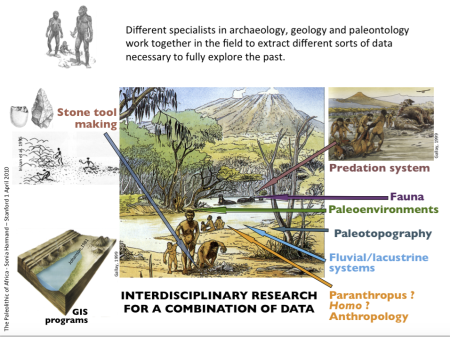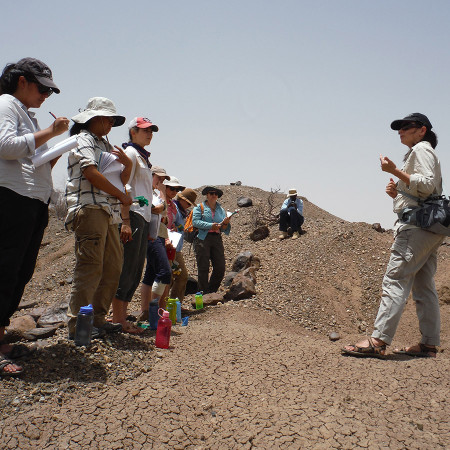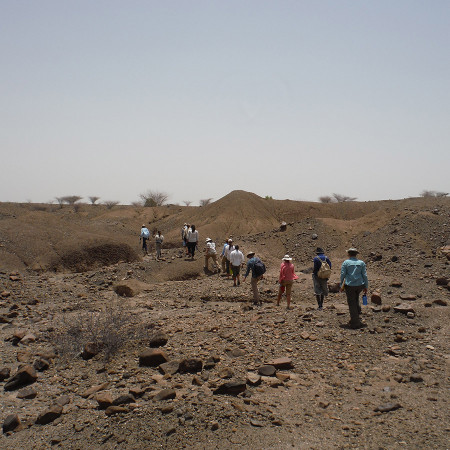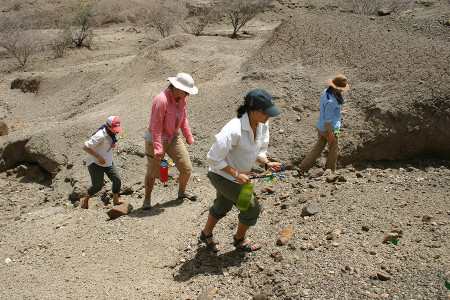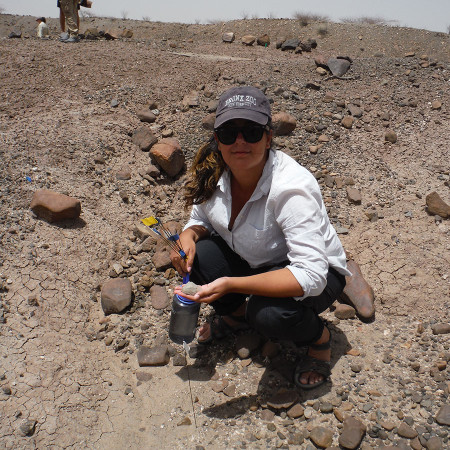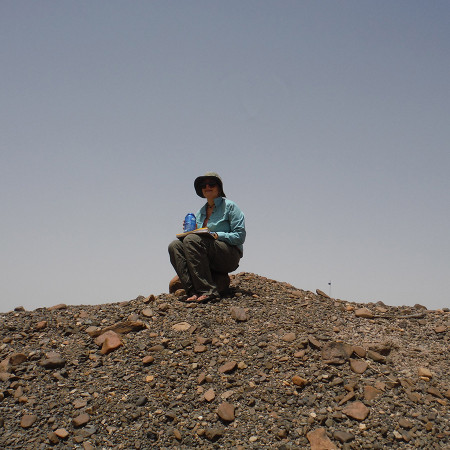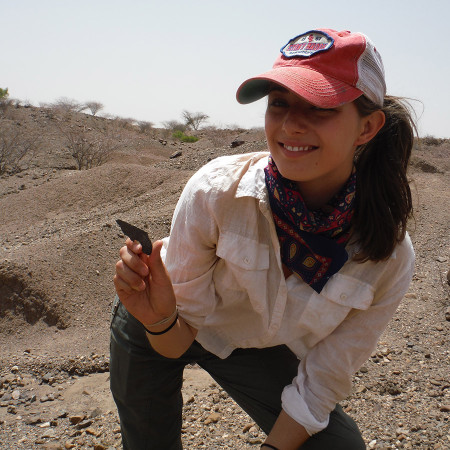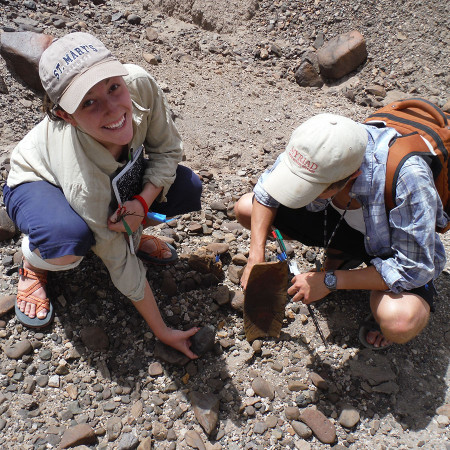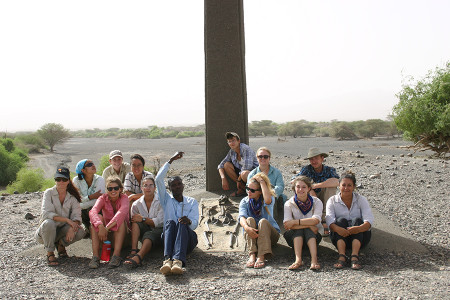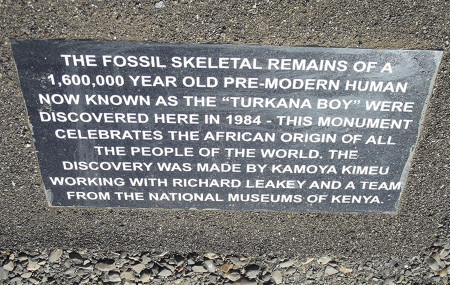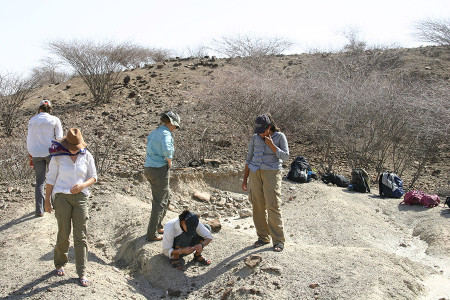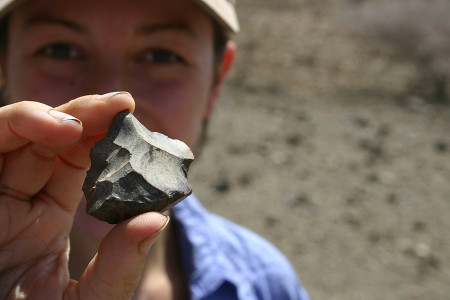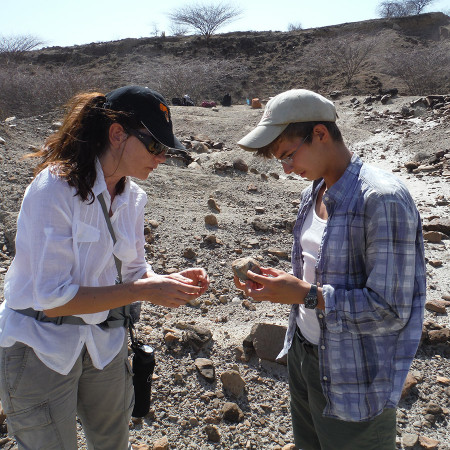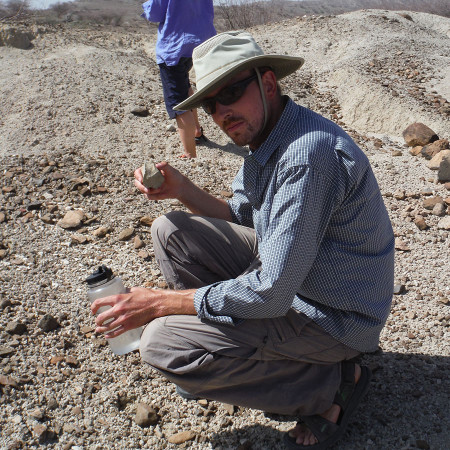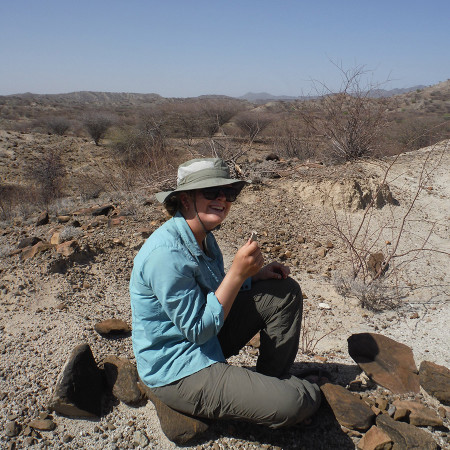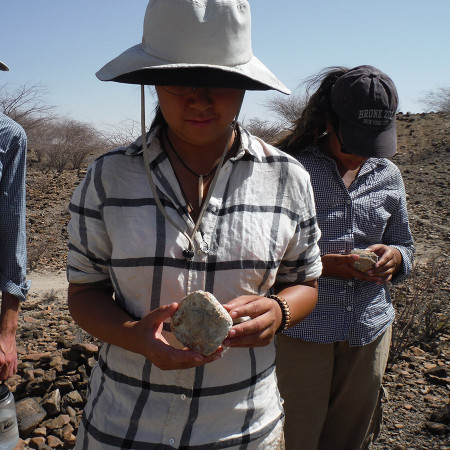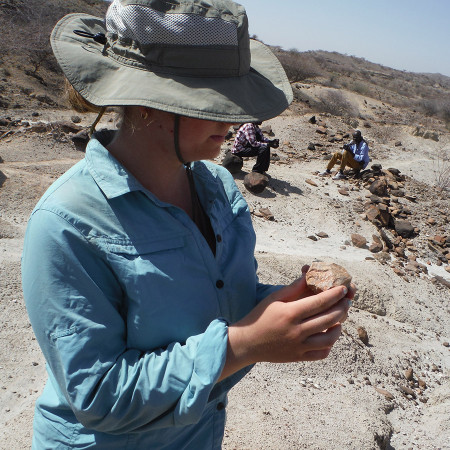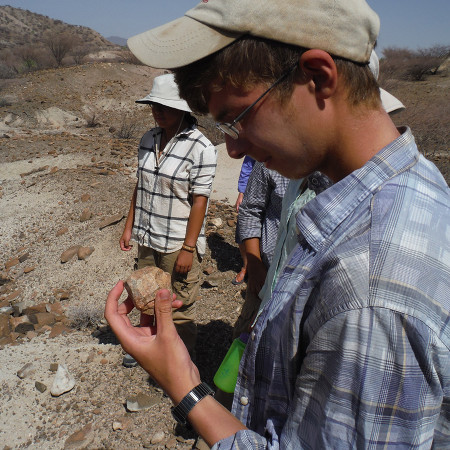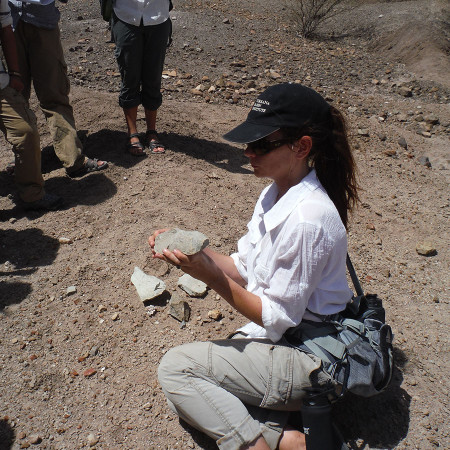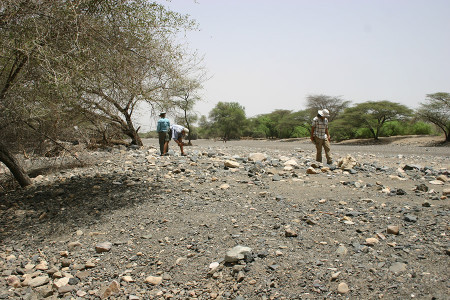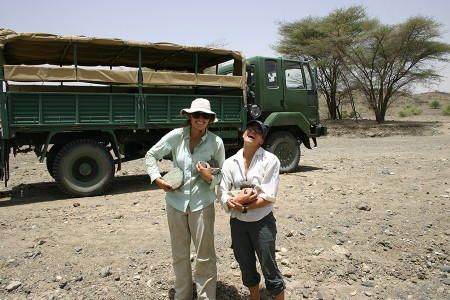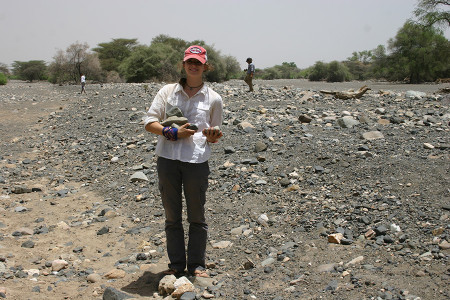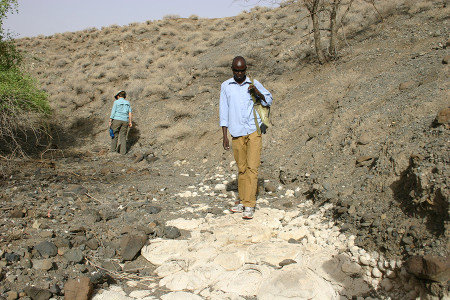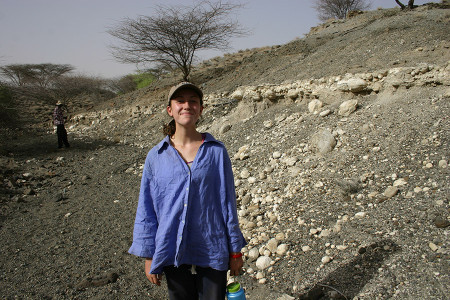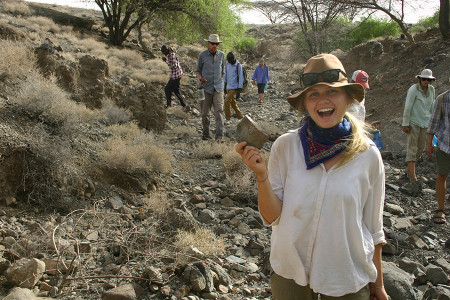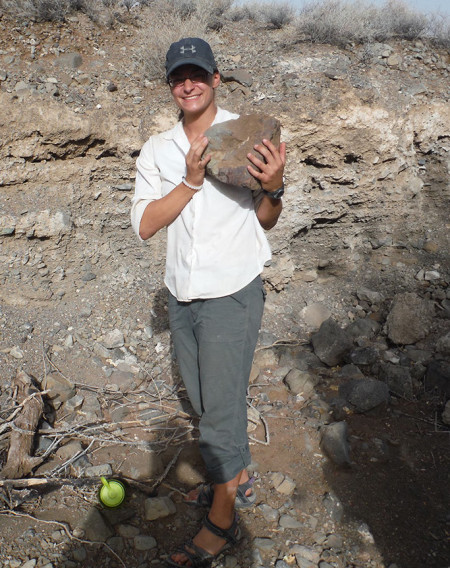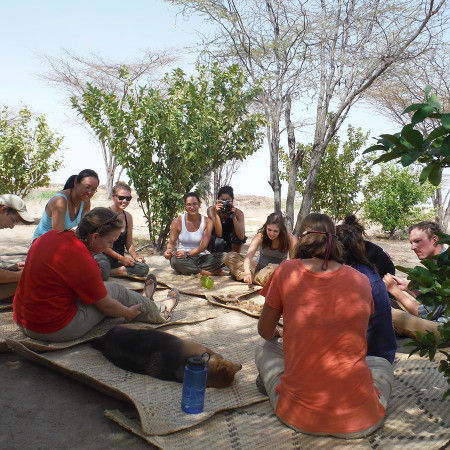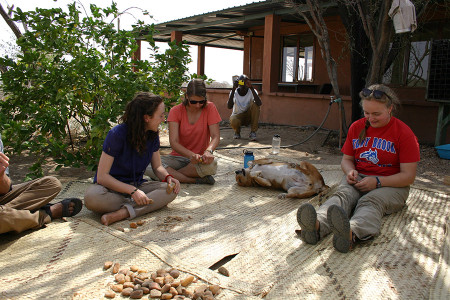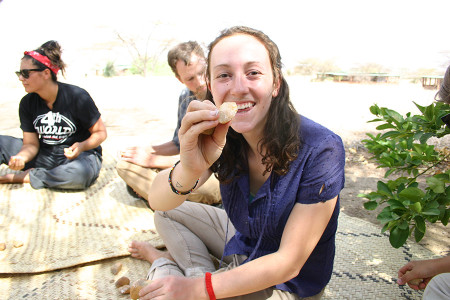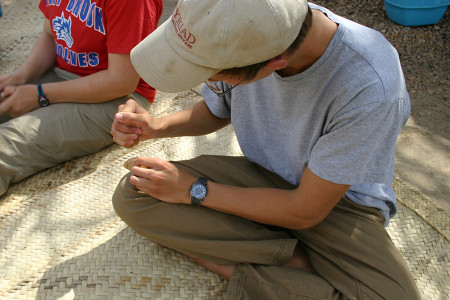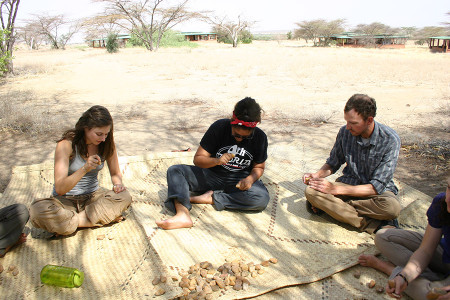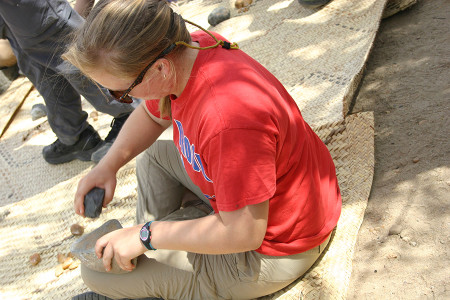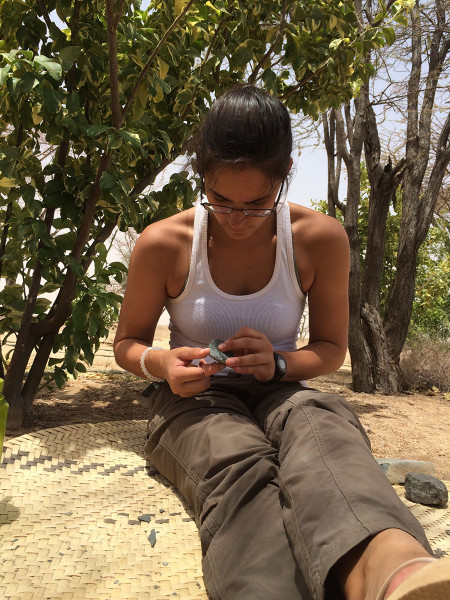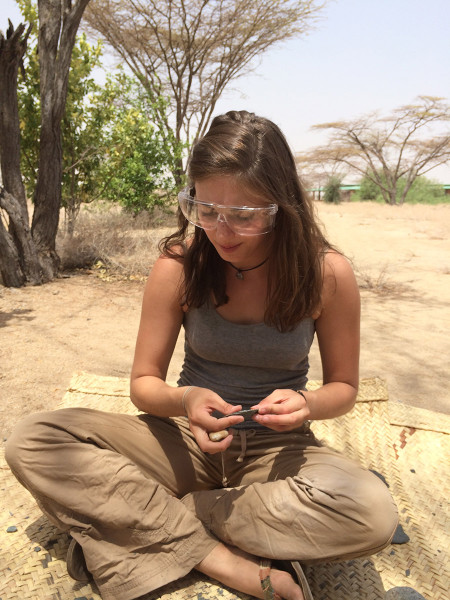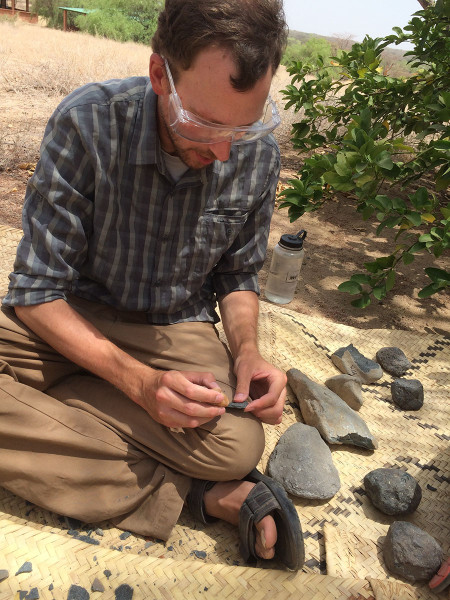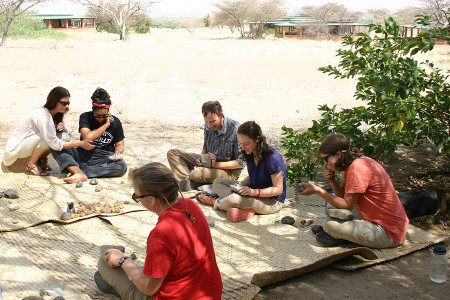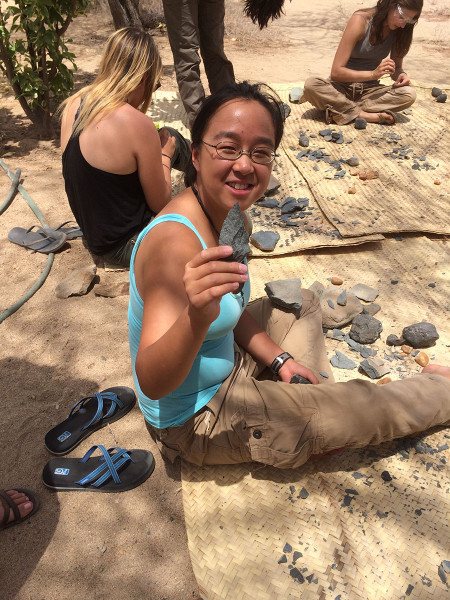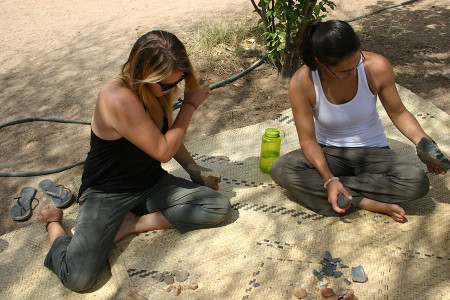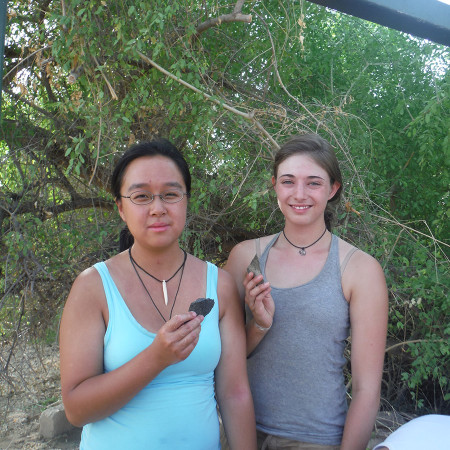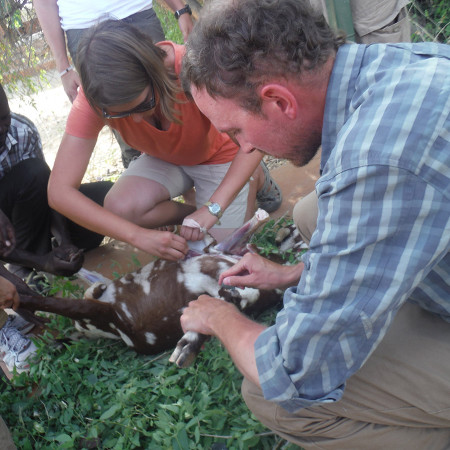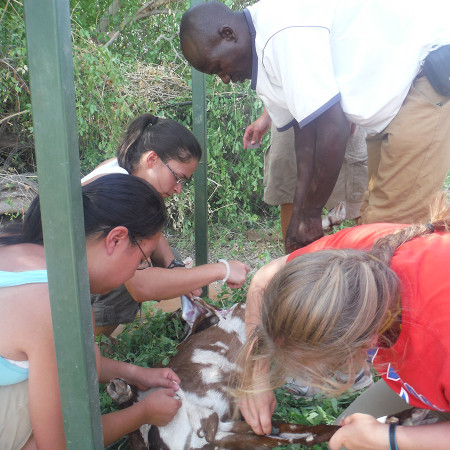In the fields of paleoanthropology and archaeology we are not just searching for bones of our early ancestors. Instead we are seeking knowledge of our biological and technological origins and how these characteristics have changed over time. Presently, the earliest fossil bipedal hominins are between 4- 7 million years old (discussed more in the next module) whereas the earliest evidence of stone tool use (based on cut marks on animal bones) is about 3.4 million years old. However, the oldest (published) stone tools uncovered are about 2.6-2.5 million years old and come from Gona, Ethiopia.
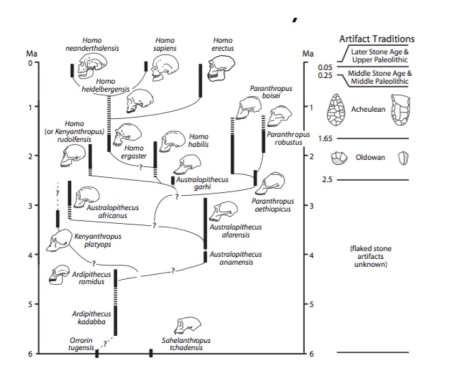
A working phylogeny of the australopithecines and Homo (after ref. 19). Flaked stone artifacts appeared at about the same time as the earliest species of Homo. The initial expansion of humans from Africa coincided roughly with the shift from the Oldowan to the Acheulean (handaxe) traditions. The subsequent expansion about 50,000 years ago coincided with the shift from the Middle Stone Age/Middle Paleolithic to the Later Stone Age/Upper Paleolithic traditions.
Figure from Richard G. Klein PNAS 2009, page 106
Questions that help us understand our evolution include:
- Why did Homo appear? When?
- What led Homo erectus (or H. habilis?) to expand outside of Africa?
- Who were the toolmakers? Where and How did they acquire the raw material? What was the purpose of each tool? Why was a particular location chosen by early toolmakers?
- What can be inferred about the behavior and/or culture of different hominin species?
In order to fully explore the past, a combination of researchers in paleontology, archaeology, and geology are needed to add a different piece of the ancient past.
Led by Dr. Harmand, field school students explored early stone artifact sites near the village of Nariokotome, West Turkana, Kenya. The Paleolithic (Early Stone Age) is divided into two technological categories called Oldowan and followed by Acheulean (see first figure above for timing). The following are pictures from our adventures.
DAY 1- We began our exploration at an Oldowan tool site called Lokalalei, containing approximately 2.3 million year old artifacts.
On our way back to camp we stopped at the Turkana Boy Monument near the village of Nariokotome. This is where Dr. Richard Leakey’s team uncovered the fossilized remains of 1.6 million year old Homo erectus. How awesome to think we were standing in an area where an early hominin species once walked!! However, the paleo-landscape was very different from today. What type of tools did H. erectus create?
Making and Using Stone Tools
Part of our trip to Nariokotome involved acquiring raw material to make our own stone tools. We made two stops to collect the same type of material used in Turkana during the Early Stone Age- phonolite, basalt, and rhyolite
Part 1- Selecting raw material
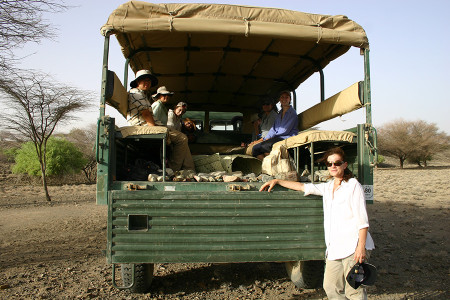
This may not be the Geology module but we sure do have a lot of rocks! We chose specific types of igneous rocks that early stone tools in the region were made out of. It seems that the early hominins were selective in their raw material and kind of like early geologists!
Part 2- Knapping
Back at TBI-Turkwel, students worked on knapping. They began knapping quartz then moved on to material they collected near Nariokotome.
Part 3- Using Stone Tools ***WARNING THE BELOW IMAGES ARE GRAPHIC OF A BUTCHERED GOAT****
It is highly likely that early stone tools were used in butchering animals. We don’t however know for sure if early hominins were hunters or scavengers but, researchers are able to distinguish between carnivore teeth marks on bones vs tool marks made at particular locations of a skeleton such as the tendons.
Below are a couple pictures of students putting their stone tools to use in the end of module Goat Roast.

